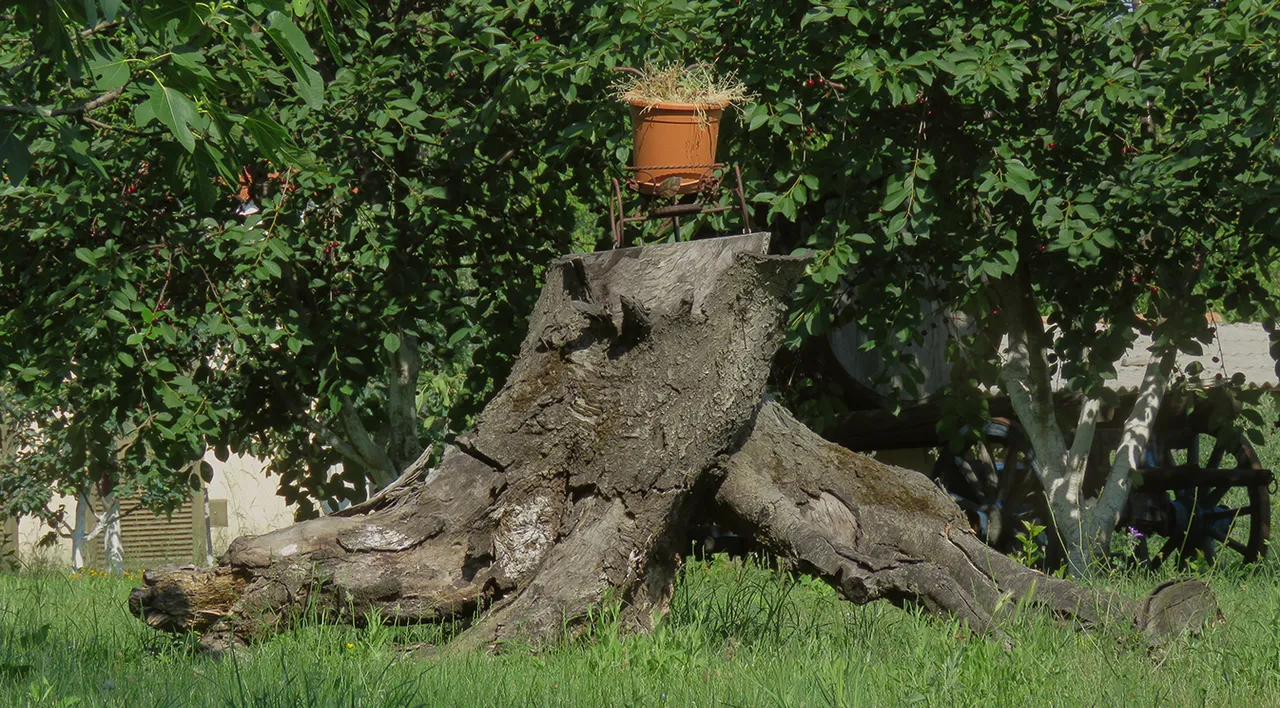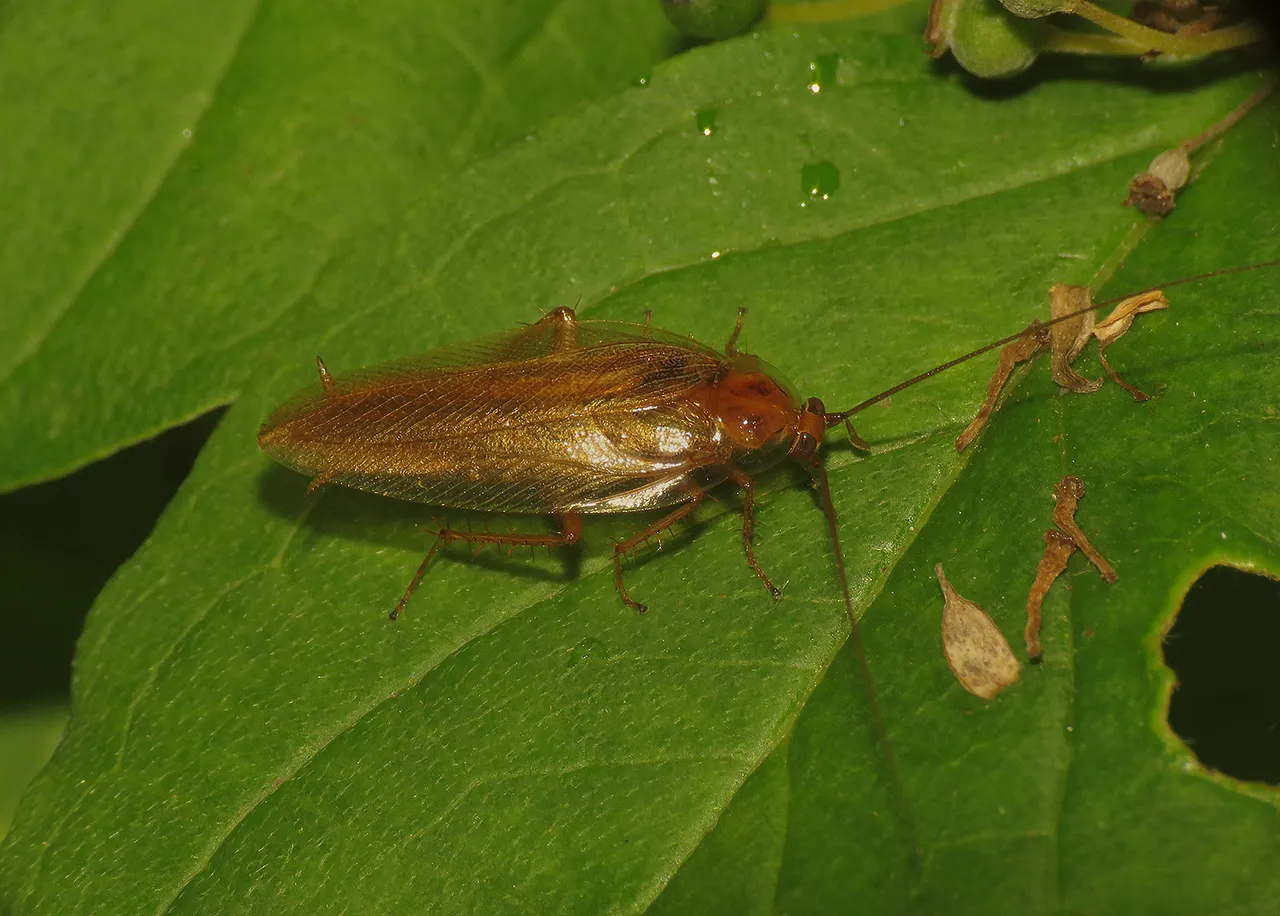Lindar is a village in the central part of Istra, the forested rural area around the city of Pazin
Today I drove sixty - seventy kilometers, parked the car about a hundred meters from the last houses of Lindar, and took my Wednesday Walk along the narrow, unpaved road bordered with lush vegetation.
There was plenty of nettle (Urtica dioica ) at the beginning of this little pedestrian journey.

This leafhopper from the Cicadellidae family (can't tell you the exact species) was photographed on the leaf of the common nettle.
Behind the lush growth of nettle and other herbaceous plants, there was a high, green wall made of shrubs and trees. On one of the flowers belonging to the Rubus fruticosus blackberry, I found a colorful leaf beetle ...
... the Cryptocephalus bipunctatus, a species from the Chrysomelidae family. The beetle was chewing the petals and the anthers of the flower.

This Stenurella bifasciata longhorn beetle was photographed on some yellow flower that grew in the shade underneath the shrubs.

A couple of meters further, I stopped to photograph the dry remains of some plant that I wasn't able to identify.

On another dried-out fragment of the same kind of plant, a tree cricket nymph was resting well hidden in plain sight. This is the young, wingless version of the Italian tree cricket (Oecanthus pellucens).
I took one last look at the nettle ...

... and continued downhill.

Soon I encountered another insect.

A cockroach.

This is the Ectobius vittiventris, a shy species that lives in the woods and never enters the areas infested with humans. These elegant small cockroaches feed on all kinds of decomposing plant material, but it seems that the rotting fruits are their favorite meal. I mean, I don't know if that is really the case. It's just a conclusion I came to after seeing them enjoying some berries on a couple of occasions.
These insects are hard to photograph. They spend the daytime hours mostly well hidden in the leaf litter, always ready to run away at the first sign of potential danger. I rarely see them posing so quietly on the upper surface of the leaf.

After some more walking, I came across the beautiful, trumpet-like flowers ...

... of the Convolvulus sepium bindweed.
If you enlarge this enlargeable photograph by clicking on it, you may notice a small bee in the upper flower.

About twenty meters further I found this lovely moth ...

... the Abraxas grossulariata from the Geometridae family.

Lindar is a village on the top of the hill. After some more walking, I could see the asphalt road down in the valley through a bit of open space surrounded by twigs, branches, and various climbing plants.

I liked the colors of this relatively small truck that looks like a toy from a distance, so I zoomed in to take a better look and a photograph to include in the post. After observing the traffic for a minute or two ...

... I turned my focus toward the flowers around me.

You can see the Lysimachia punctate plant in these photographs.
These beautiful flowers can't be seen in my southern, seaside area, so this part of the walk has a special place in my heart. 😀❤️😀 It's great to encounter a new species for a change.

Here you can see the interesting fruits ...
... of the Physalis alkekengi plant.

The light was pretty low among the dense vegetation in the shade under the trees, so most of the photographs were taken using the flash of my camera.

Only in this shot, you can see the scene in ambient light.
A month or two from now, the fruits will look like little red lanterns ...
... but today the entire plant was still completely green.

Soon I found a spider on one of the leaves. Can't tell you the species. Don't remember seeing this spider before.

Another Abraxas grossulariata was resting nearby. These moths are very rare in my area. I saw only two of them in the last few decades, and now, here near Lindar, I already encountered two of these beautiful moths in one day.

About twenty meters further I photographed this mating pair of Otiorhynchus ligustici weevils.

Not far from them, an elongated cocoon was hanging in the center of an interesting three-dimensional web made of quite a few layers of vertical and horizontal threads.

A bit further I photographed this Celypha striana, a moth from the Tortricidae family, and then, not far from there ...

... I encountered the third Abraxas grossulariata today. Now I can finally say that I saw more of these moths today in this area than in all of my life before today.
On my way back to the car, I stopped near the top of the hill to photograph the relatively distant outskirts of Pazin, the nearest city.

The car was parked in front of The Church of St. Catherine which was built in the 14th century.

Here you can see the interesting old villa that looks like a little castle. It was built in the last decade of the 19th century.

Before entering the car I photographed this flower pot ...

... mounted on the remains of some old tree.
AND THAT'S IT. SOON I WAS DRIVING BACK HOME TO ORGANIZE THE PHOTOGRAPHS AND PREPARE THIS POST THAT HAD TO BE PUBLISHED TODAY. AS ALWAYS HERE ON HIVE, THE PHOTOGRAPHS ARE MY WORK.












